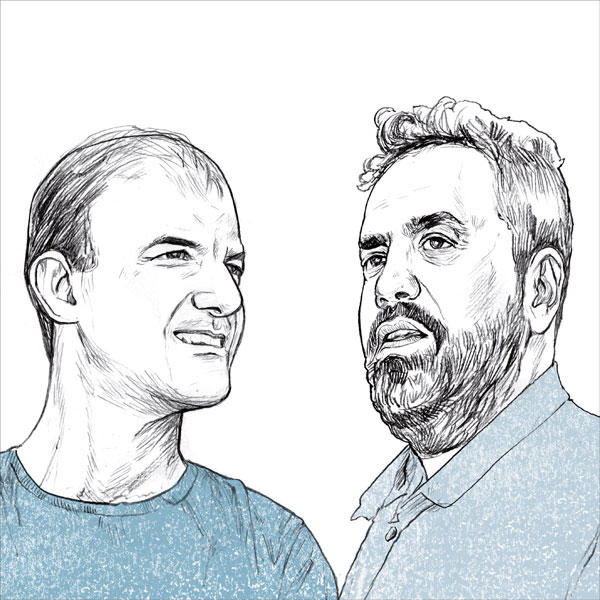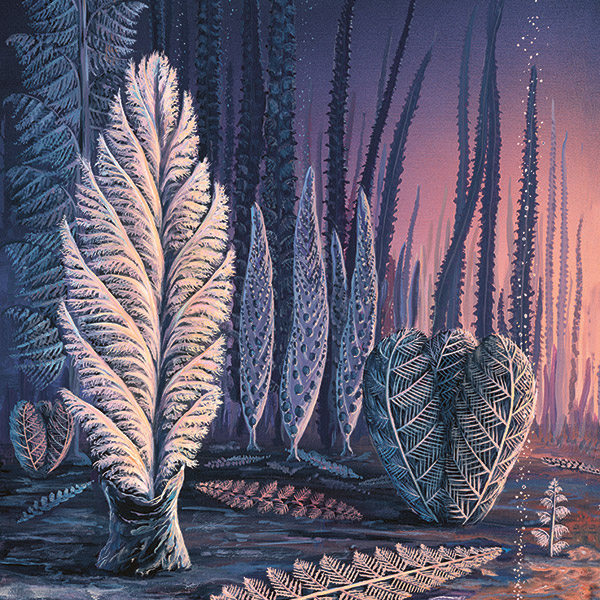EVOLUTION
The single-celled organisms shaking up the tree of life
Similar in appearance to bacteria, but closer in function to human cells, archaea are fuelling the evolutionary debate. According to the theory dominant since 2015, we are descended from these organisms without a nucleus.

The long appendages of the archaeon Lokiarchaeum ossiferum are visible under an electron microscope. They confirm that this single-celled organism has a cell skeleton – not unlike human cells. | Photo: Thiago Rodrigues-Oliveira / Uni Wien
The universal tree of life can be traced back to the last common ancestor of two species. It traces the evolution of living organisms. On the one hand, there are bacteria, and on the other, a branch leading to cells with a nucleus – eukaryotes – which gave rise to animals, plants and fungi. But in 1977 a third group of organisms, archaea, was identified and it now confounds these classifications. Despite resembling bacteria, these enucleate cells, i.e., without nuclei, behave more like eukaryotes.
For a long time, the debate raged as to whether eukaryotes – and therefore humans – were just another type of archaea or whether the two groups were separate and distinct. In 2015 the deck was reshuffled by the discovery of the Asgard archaea, which was proposed to be the missing link in evolution. Their proximity to eukaryotes meant that they were quickly accepted by the vast majority of biologists as our ancestors, corroborating a model in which we would appear right in the middle of the archaea.
The consensus is not joined by the evolutionist Patrick Forterre, an emeritus professor at the University of Paris-Sarclay and at the Pasteur Institute. “To reconstruct the evolutionary tree, we compare proteins that are conserved within living organisms. However, depending on the protein used, we obtain different trees, which place us sometimes within the Asgards and sometimes outside the archaea”, he says.
In Forterre’s opinion, these results can only be explained if the ancestors of eukaryotes were in fact separate from archaea, but evolved in association with Asgard, exchanging certain genes as they cohabited. “Our direct kinship with Asgard only appears when we compare all the proteins simultaneously. But in both cases, Asgards are interesting and have played a role in the evolution of eukaryotes”.
A model for human cells
Anja Spang shares Forterre’s interest in these archaea. She is an evolutionist and microbiologist and a professor at the University of Amsterdam; she is not, however, convinced by his theory. “By building trees on a single protein at a time, we don’t obtain enough statistical power to go back through two billion years of evolution”, she says. As a specialist in archaea, she contributed to the discovery of the Asgards alongside Thijs Ettema and other colleagues.
“Debates are good for science, but it’s important to focus on the evidence”, Spang says. “Combining the most realistic phylogenetic models with an unbiased set of proteins has provided statistical support for eukaryotes emerging from the Asgard family”. For her, the new debate concerns the level of complexity of the Asgardian ancestor of eukaryotes.
“Evolutionary biologists like to put forward contradictory hypotheses; it makes the debate interesting”, says Martin Pilhofer, a professor at ETH Zurich. He is a microbiologist and a specialist in high-resolution microscopy who studies the cellular framework, known as the ‘cytoskeleton’. This structure, which is essential for the division and movement of our cells, is the target of many chemotherapies, for example. The discovery of the Asgard archaea in 2015 sparked Pilhofer’s interest. “I was on the lookout for the first group capable of cultivating them that would be willing to collaborate with me”, he says.
The project came to fruition thanks to the microbiologist Christa Schleper from the University of Vienna. Their collaboration brought to light cytoskeletons that were already highly developed in the Asgard archaea, “a crucial element for their complexification into eukaryotes”, according to Pilhofer. These discoveries go beyond the quest for our origins: “Asgardian versions of microtubules can also be used directly as tools to study our own. With potential applications in oncology”.




